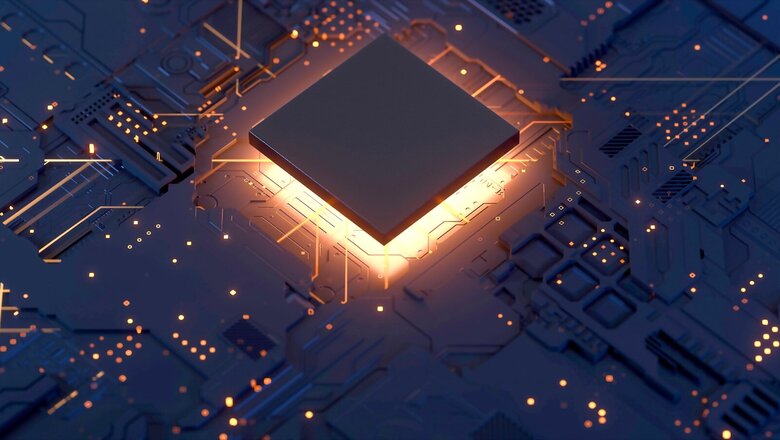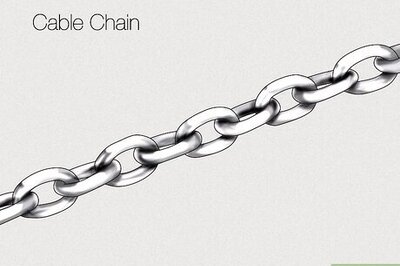
views
As the Russia-Ukraine crisis continues, questions have been raised about how this might affect China’s decision-making process on Taiwan. The island nation remains under threat from potential Chinese aggression and its lucrative semiconductor industry hangs in the balance. India, as a growing semiconductor power, must look at Taiwan closely on technology cooperation in the domain and should not shy away from building a semiconductor alliance with the country. It is imperative that Taiwan’s semiconductor industry be protected in case of external aggression by building redundancy and resiliency through partnerships with key states like India.
Why Focus Now?
Three key global drivers are necessitating a particular focus on Taiwan and its semiconductor industry: geopolitical, economic and technological.
Geopolitically, semiconductors have become an area of confrontation between the US and the People’s Republic of China (PRC). The pandemic has further exacerbated the situation leading to an acute shortage of chips for automobiles, medical devices and other sectors. A hyper-globalised semiconductor supply chain with inherent dependencies has been a critical driving force for rapid improvements in the performance capabilities of electronics devices around us. This supply chain structure prevents even the most technically advanced states from achieving complete self-resiliency, hence making partnerships between like-minded nations to secure the semiconductor supply chain an absolute necessity.
Taiwan, home to over 60 per cent of the world’s contract chip manufacturing, is a crucial player in the race for building a robust semiconductor supply chain. By involving Taiwan in the Quad’s Semiconductor Supply Chain Initiative, India can get access to semiconductor technology that remains critical for strategic sectors like defence.
Economically, it is not straightforward to scale the manufacturing supply to meet the increasing demand. Taiwan and its foundries alone cannot meet the increased demand for the 8-inch and 12-inch wafers. There has been a capacity override for different chipsets, with the utilisation for the 8- and 12-inch wafers reaching 100 per cent. The capacity increase rate remains slower than the demand increase rate, with foundries reluctant to expand the 8-inch wafer capacity and companies taking almost 1.5 to 2 years to build a 12-inch wafer fab. Further delays caused by power outages and accidents due to fires, storms have effectively discouraged firms from scaling up operations.
Hence, foundries like TSMC (Taiwan Semiconductor Manufacturing Company) have signed contracts to build fabs on international soil, such as the upcoming 12-inch fabrication facility in the Arizona state of the US. Major foundries are looking to expand their operations to different countries which can provide them with facilities to meet the future demands for semiconductor chipsets. As a semiconductor design powerhouse, India has the potential to be one of the favourable destinations for Taiwanese semiconductor manufacturing firms to set up fabrication facilities for meeting global demands.
Thirdly, emerging technologies need high-performance semiconductor chips with ample computing power (specifically those less than 7-nanometre technology). The telecommunications infrastructure to be deployed for 5G will include satellites and mobile-edge computing technology that require advanced chips. Artificial Intelligence (AI) deployment needs new computational architecture to handle increased in-chip data flows. As these technologies evolve, the semiconductor design and manufacturing processes also need to grow to meet customers’ needs. These developments offer another area for cooperation between the two semiconductor industries.
ALSO READ | Ukraine War Won’t Affect Global Semiconductor Supply, But Will Hit Russia Hard
Priority Areas for Collaboration
The semiconductor supply chain remains a vast entity with multiple avenues available for cooperation. But India and Taiwan must stick to their comparative advantages in the market and build a robust semiconductor coalition around their strengths. Starting off, both countries need to focus their attention on two main things:
1. The Pending FTA: There have been talks regarding the finalisation of a free trade agreement (FTA) between the two states. This should remain a priority both from an economic and strategic perspective. A finalised FTA would in turn help facilitate semiconductor cooperation.
The FTA will play a major role in facilitating cross-border transfer of semiconductor manufacturing equipment and other materials used for fabrication. Currently, the import duties still remain on the higher side in India and a well-negotiated FTA resulting in minimal or zero tariff structure can help in instilling confidence in Taiwanese semiconductor giants like TSMC and UMC (United Microelectronics Corporation). Since semiconductor manufacturing has varied requirements in the form of what to use, the import of specific equipment is an essential part of the process. If India wants to build a fabrication facility, streamlining this remains a necessity.
Another major roadblock that can be cleared by the FTA is dissemination of technology by facilitating crucial technology transfers related to semiconductor manufacturing. Unlike basic industrial manufacturing, the fabrication process of semiconductor chips requires medium- to high-skilled labour who are well-versed in the operation of specific equipment and maintaining necessary surrounding conditions. Taiwan can engage in providing technology training to Indian engineers and labourers through the FTA to make them well-versed in the manufacturing process itself.
2. Setting up a Manufacturing Hub: Given the semiconductor supply crunch, the US, EU and Japan are now courting Taiwanese companies to set up new leading-edge semiconductor manufacturing facilities. The opportunity for India-Taiwan collaboration here is a complementary one. Instead of focusing on the leading-edge nodes, India and Taiwan can look towards specialised analog fabs built on older technology nodes (such as the 65-nanometre feature size). Focusing on the older technology nodes will also reduce the economic risk of failures.
ALSO READ | Industrial Policies Alone Cannot Give Desired Results in Tech Sector. Just Look at US, China Mistakes
Considering the expertise the Taiwanese companies have in the manufacturing process, a focus on setting up a semiconductor fabrication hub in India must be one of its priorities in the near term. However, semiconductor manufacturing is a capital-intensive stage requiring billions of dollars upfront and recurring investment. Hence, the proposed FTA can act as an impetus for India to attract investment from Taiwan.
Even with the recent semiconductor package that the Indian government has announced, the costs associated with setting up a fab in India will be enormous which means that the partner Taiwanese company must be taken into confidence. If such a facility can be set up, it would help India economically in terms of jobs and revenue while helping Taiwan maintain its strategic hold over the semiconductor manufacturing process.
Taiwan remains a critical state in the global semiconductor ecosystem and any sort of economic or military threat to its semiconductor industry can bring the global supply chain to a standstill. As a technological powerhouse, India should ensure that the strategic aspects of the country’s industry remain protected while it builds a strong alliance in the field of semiconductors. If a Ukrainian situation arises in the South China Sea in the future, India can play a major role in keeping afloat the biggest industry that Taiwan has to offer to the world.
Arjun Gargeyas is a research analyst at Takshashila Institution. The views expressed in this article are those of the author and do not represent the stand of this publication.
Read all the Latest Opinion News and Breaking News here



















Comments
0 comment